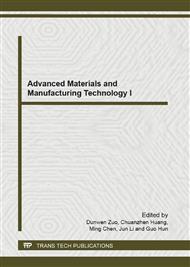p.93
p.97
p.101
p.106
p.112
p.118
p.122
p.126
p.131
Optimal Design Study on the Radian and Length of the Guide Plates for the Pipeline Elbow
Abstract:
Pipeline elbows are extensively applied in the liquid-conveying piping system, which vibration and noise control are always difficult and critical. The structural style of the guide plates for the liquid-conveying pipe noise eliminating elbow is numerical calculated in this paper, then we find that the fluid liquidity in the liquid-conveying pipe elbow is improved very well by the cross-sectional bending radian and export length of the guide plates, and the two parameters are also optimal designed. The calculated results show that the total pressure difference in the liquid-conveying pipeline elbow decreases first and then increases with the cross-sectional bending radius of the guide plate increases; The total pressure difference decreases first and then increases with the export length of the guide plate increases; When the guide plates according to the gold ratio arrangement, the number, the cross-sectional bending radius and the length are 2, 200 mm and 40 mm respectively, we obtain the total pressure difference is 10707.87 Pa in the liquid-conveying pipeline elbow, comparing it to the result of the original program, it decreases 38.58%, so the internal flow field is improved better, the optimal design has a very obvious effect.
Info:
Periodical:
Pages:
112-117
Citation:
Online since:
January 2012
Authors:
Keywords:
Price:
Сopyright:
© 2012 Trans Tech Publications Ltd. All Rights Reserved
Share:
Citation:


